When the FBI raided the apartment of a wounded veteran in Texas last spring, they were prepared to be greeted with homemade bombs triggered by alarms or motion sensors.
FBI investigators suspected 36-year-old Josh Honigberg was selling explosives and had the training to set such a trap. A former friend even told agents about the ex-cavalry scout’s plans if law enforcement came knocking.
“He would use [explosives] to level the front half of his building and be able to gain a vantage point, fighting in his bedroom through the rubble in the hallway,” Stetson Nall, 25, later testified.
But when FBI agents searched Honigberg’s apartment, they didn’t report any booby-trapped alarm systems. Instead, they found and seized a small Pelican case that an FBI bomb technician on scene said was rigged with improvised explosive devices and spikes to detonate like a claymore mine.
Honigberg declined plea deals and went to jury trial last month, where he beat the FBI’s bomb charge. Hearings revealed war wounds, questionable evidence destruction and a disputed sale of silver bullion.
Lawyers debated what could be done with the Pelican case and its contents. An FBI agent said Honigberg had a finished claymore ready to use, while the ex-soldier’s defense team contended that he was a battle-scarred man with eccentric but ultimately benign hobbies.
“There are parts of me that aren’t great,” Honigberg told Army Times after his Aug. 18 acquittal. “I have PTSD. I have TBIs. But none of that means that I have any anger towards anyone. None of that means I have any resentment.”
Trigger man
A New York City native, Josh Honigberg joined the Army in 2004. He served as a cavalry scout for two tours in Iraq and a final one in Afghanistan, assigned to the 2nd Cavalry Regiment out of Vilseck, Germany.
His injuries are grimly familiar to many of America’s post-9/11 war wounded.
Two separate 60-pound IEDs struck Honigberg’s vehicle in Kandahar Province, Afghanistan, during the summer of 2010.
He was medically evacuated to Landstuhl, Germany, for surgery to his groin after the second blast, but pushed to rejoin his platoon two months later, a Bronze Star citation stated.
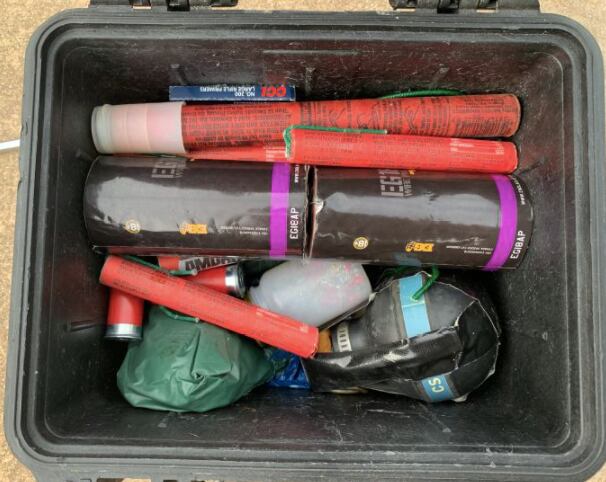
Miles-long dismounted patrols through dense orchards and urban sprawl were the norm when he returned. Another IED detonated near Honigberg in December 2010. He and a few other troopers chased down the trigger man, award documents stated.
But Honigberg’s poorly healed wounds deteriorated, and he was eventually sent back to Germany. Doctors discovered that his groin injuries had turned necrotic, according to a medical history detailed in court filings. Surgeons operated again, but the nerve damage was extensive.
Honigberg was sent to the Warrior Transition Battalion at Fort Benning, Georgia, where his Army career limped on a few more years before he was medically retired as a staff sergeant in 2013. More surgeries and chronic pain followed. Eventually his trouble standing required that he be given a wheelchair.
“I’ve been blown up by IEDs,” Honigberg said. “I know what an IED is and I would never make one and I would never want anyone to be hurt by one.”
Chemicals and pyrotechnics
Honigberg settled near Fort Hood, Texas, in 2013. It split the distance between his then-wife’s family and his own in Austin.
The FBI wouldn’t zero in on him for a few more years, but their investigation had its roots in this time period, when Honigberg was oscillating between hospital stays and offbeat hobbies.
The FBI’s search warrant application in 2020 stated that Honigberg bought hydrochloric acid from Duda Chemical in 2017. The company reported the sale because the acid has precursors used in explosives.
But the acid was labeled on its receipt as a concrete cleaner and it was actually purchased through Amazon for $16.50. At his trial, Honigberg testified that the acid was for removing stains in his garage after he spray-painted camo patterns on camping gear.
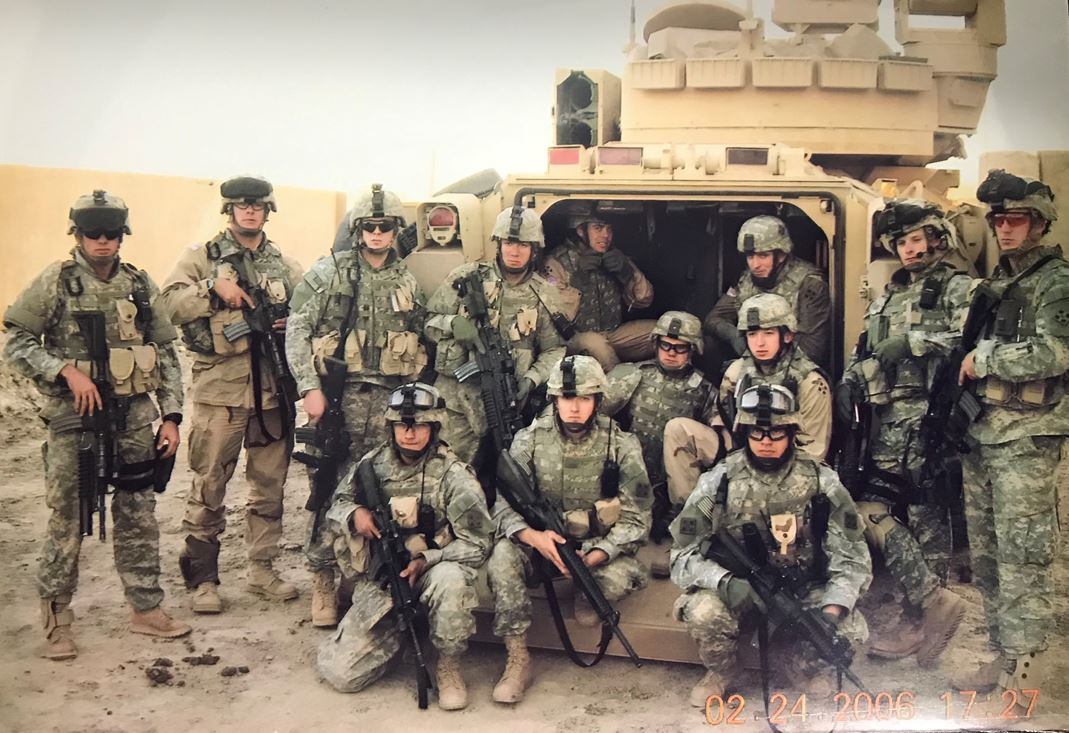
When the FBI eventually raided Honigberg’s apartment, agents found other chemicals that could also be used in homemade bombs. But the chemicals had legal uses, too.
Honigberg testified that the nitric acid was for extracting precious metals from motherboards and other computer parts. The potassium permanganate, he added, was an emergency fire starter.
When it came to the sulfur and iron oxide found in ammo cans, Honigberg testified he “wanted to get into reloading shotgun shells.”
“I was always going in and out of the hospital, so [it] just ended up in storage,” Honigberg said.
But the trial really centered on Honigberg’s Pelican case. The FBI said they found IEDs inside, but Honigberg said they were just faulty homemade fireworks he made with his step-son.
After watching online tutorials in 2017, Honigberg combined two teaspoons of gunpowder with a thermite recipe — aluminum, iron oxide and magnesium. He poured the powders into plastic bags and taped the devices up with hobby fuse leading out.
“We set some of them off at my sister-in-law’s house with regular fireworks,” Honigberg told Army Times. “It pretty much fizzled out.”
Honigberg said he kept the devices because he didn’t feel they were dangerous and didn’t know how to dispose of them. The decision would set him on an eventual collision course with the FBI.
Silver bullion
By 2019, Honigberg and his wife had separated. He moved into a new apartment in Austin. It was closer to his mom, who was his caregiver through a VA program, but he was living alone for the first time.
Stetson Nall and Honigberg met during this period. They both had dogs and became friends. Nall even spent Christmas with the Honigberg family. Honigberg’s mom gave Nall gifts and lent him money for an apartment security deposit.
Collecting on that loan “was always a challenge,” Honigberg said, because there was a dispute over how much was owed.
Then there was the silver sale in April 2020 that ended of their friendship.
Nall felt Honigberg tried to “slight him out of money by selling him fake silver bars worth approximately $60,” an Austin police report from early in the investigation reads. The disputed sale was Nall’s “primary motivation” for coming forward, the report added.
Honigberg, who routinely bought precious metals from trading posts, said he didn’t know the silver was fake.
“As soon as he got upset, I transferred him the money back. I was trying to defuse the situation. I wasn’t trying to defraud him,” Honigberg testified.
Regardless, the rift grew.
“We were very tight, very close friends, and then he started trying to manipulate me. He was making rash decisions,” Nall told Army Times. “He started talking about trying to sell some of those explosives.”
“I got pretty mad about the silver, and decided it was also time that people knew about the bomb,” Nall added.

Nall had seen the devices early in their yearlong friendship. He described them as floppy tubes of tape to FBI agents. That essentially matched what they later found.
The devices also contained shotgun pellets and glass, Nall told law enforcement.
But an FBI lab report obtained by Army Times did not corroborate that. It only confirmed the crude devices contained a gunpowder and thermite mixture.
Under scrutiny
An FBI Joint Terrorism Task Force probe began after Nall called Austin police on April 30, 2020, to report Honigberg’s activities.
FBI task force officer Jeffrey Deane picked up the tip and began speaking with Nall weeks later. Nall told Deane how he witnessed Honigberg sell guns before, including a .38 caliber pistol to someone at a dog park.
During that incident, the buyer also “asked Honigberg about purchasing explosives,” Deane later wrote in the FBI’s search warrant application. “[Nall] did not witness the actual exchange of explosives, but believes Honigberg had sold them in the past.”
The investigation into Honigberg grew to involve days of ground and aerial surveillance, but agents never learned who Honigberg allegedly sold bombs to or whether he sold any at all, according to court transcripts.
Text messages between Nall and Deane read in court showed that Nall had reservations about working with the FBI. At one point during the investigation, Nall stopped responding to Deane.
So Deane reassured him.
“If this makes you and [your girlfriend] feel better, think about this: Right now I’m doing everything I can to prove what you told me is true,” Deane texted Nall. “The last thing I would do is discredit you.”
Deane later testified that the texts were in reference to drug involvement with Honigberg, and if Nall had “told me evidence of a serious crime, I would have to act on that.”
Nall ended up providing a video that showed Honigberg discussing a gun sale with an unknown person, the FBI’s search warrant application stated. The video took place in Nall’s apartment and was filmed by Nall’s girlfriend two weeks before he reported Honigberg, according to trial transcripts.
Honigberg said the video was out of context and believes it was a set up, a contention Nall disputed.
“She was worried that if that guy came in there and decided he wanted to rob us she had it on video,” Nall told Army Times.
No-knock warrant
Agents’ concerns about facing motion sensor IEDs at Honigberg’s apartment were also sourced from Nall.
“He had multiple explosive devices in his home,” Nall testified. “He was looking to make a trip mechanism for them to go off when someone entered the door, and it just wasn’t safe.”
The claim seemed plausible to FBI agents based on the training they believed Honigberg underwent.
In 2008, Honigberg attended the Army’s year-long Explosive Ordinance Disposal course, where he would’ve “received advanced training in commercial and improvised explosives,” the FBI’s search warrant application stated.
Honigberg’s defense team disputed that he ever went through EOD training.
The course was listed on a record known as a “Verification of Military Experience and Training,” which was provided by an Army intelligence officer assigned to the FBI Joint Terrorism Task Force. The Defense Department warns that VMETs come from automated systems and sometimes include incorrect information.
From 2004 to 2013, Honigberg only served as a cavalry scout, official discharge papers stated.
“We went back into his file and did not find any record of him attending/completing EOD school,” Army spokesman Lt. Col. Gabriel J. Ramirez told Army Times.
The FBI asked for a no-knock warrant to raid Honigberg’s apartment partially because of the reports of explosives and because Honigberg “is trained in their use,” the application stated.
The no-knock warrant, where an agent does not announce their identity, was also needed because of a March 2020 incident in which Honigberg hallucinated people were trying to force their way inside his hotel room, the FBI’s search warrant application stated.
Honigberg “had taken a defensive position inside of a room with his pistol,” before Austin police arrived and seized the weapon, the application added.
There was more to that story, Honigberg said on the stand.
He had been hearing voices, but he was also the one who called police, Honigberg testified. He stayed on the line with the operator, unloaded and cleared the pistol before laying it on a towel. Police called him out of his room without incident and no illegal substances were found, according to court transcripts.
The raid
Honigberg knew Nall might report him to law enforcement. Nall had said it during an argument, Honigberg testified. This prompted Honigberg to gather up his homemade devices and place them in the Pelican case.
“I thought, ‘Okay, if he calls the FBI, they’ll come by, knock on the door. They’ll be, like, Mr. Honigberg, you know, do you have any bombs in your house?’” Honigberg testified. “I’d be, like, ‘No. I have some fireworks I made with my son.’”
The devices rested among other items inside the Pelican case — some benign, like purple smoke bombs, and others not so much, like caltrops, a type of tire spike Honigberg brought back from Iraq.
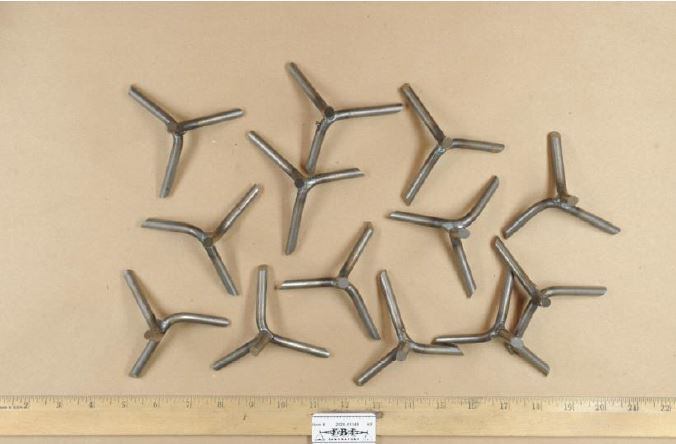
The caltrops were in the case before Honigberg placed the homemade devices inside. After adding the new items, he put some caltrops back.
“I just didn’t want to forget that that’s the box that stored the caltrops,” Honigberg testified. “That’s why I separated it with the t-shirt with the intention of the two not being combined.”
Kitted out FBI agents swooped in as Honigberg left his apartment in a wheelchair to walk his service dog mid-morning May 29, 2020.
Honigberg was detained but remained calm and friendly with agents, FBI task force officer Deane acknowledged during cross examination.
Meanwhile, dozens of people were evacuated from the apartment complex. SWAT vehicles and ambulances were brought in and fire trucks wrapped around the building to serve as blast shields, trial records stated.
Then the search started. Agents found the chemicals, seven grams of psychedelic mushrooms in Honigberg’s bedside table and other items of note.
A forensic report on his Kindle, for instance, showed that the U.S. Army Improvised Munitions Handbook had been viewed. But it was among other Department of Defense manuals he accessed, Honigberg testified. There were also books on macabre subjects that he was questioned about, like guillotines, torture and disappearing without a trace.
“When you’ve spent so much time around death, you do find an interest in it,” Honigberg testified. “But finding an interest in something and having it actionable are very, very different.”
Something’s in there
The FBI eventually found the Pelican case in one of Honigberg’s closets. They brought it to the Austin Police Department’s demolition range to be opened by a robot.
At the very top, they found 13 neatly interlocked caltrops separated from other items by the t-shirt.
The FBI special agent bomb tech on scene, James Wilson, said in court that those were placed there intentionally because there were other caltrops outside the box on a shelf.
The entire case, Wilson added, was a claymore designed to blast deadly caltrops in every direction.
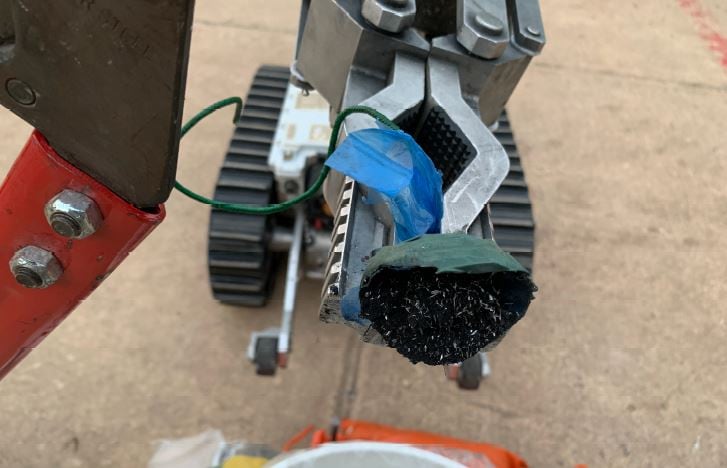
But there were also random items inside, including road flares, smoke bombs, a caustic substance grenade, a BIC lighter and primers for reloading ammunition. Wilson said that such items are not necessarily out of the norm.
“There’s also times when people build a device and throw things in there to confuse bomb techs,” Wilson said on the stand. “I believe it’s a finished device that was ready to be employed.”
Beneath all those items were the five devices Honigberg said he made with his son, and which Wilson said served as explosive charges in the ad-hoc claymore.
Small samples of the powders inside the devices were taken, but their components and everything except the Pelican case and caltrops was destroyed the day of the raid — a decision that frustrated Honigberg’s defense team.
Volatile stuff
Homemade explosives can be unstable, so Wilson decided not to preserve the wrappings and fuses out of safety concerns. He also declined an offer from George Ewing, a senior Austin police bomb tech working the scene, to try to preserve components.
“I wouldn’t go fishing into the bucket for them, but the pieces held by the robot, if we removed the explosives better in that piece, we could preserve them,” Ewing testified.
Honigberg’s federal public defender, Charlotte Herring, questioned why there wasn’t an attempt made to preserve the components.
“In a recent case handled by our office,” Herring said in a statement to Army Times, “[Austin police] had carefully saved components of alleged destructive devices (such as fusing, wrapping, duct tape, powder, pellets), had allowed members of the defense team to inspect that evidence, and had carefully documented all pieces of evidence at the site of the render safe procedure.”
The FBI’s San Antonio office, which investigated this case, declined multiple requests for comment. But in court, Wilson said it was too risky to even use the robot to shake the powders out.
“It’s not a guarantee that’s going to get the power out. And then that’s another risky maneuver,” Wilson said.
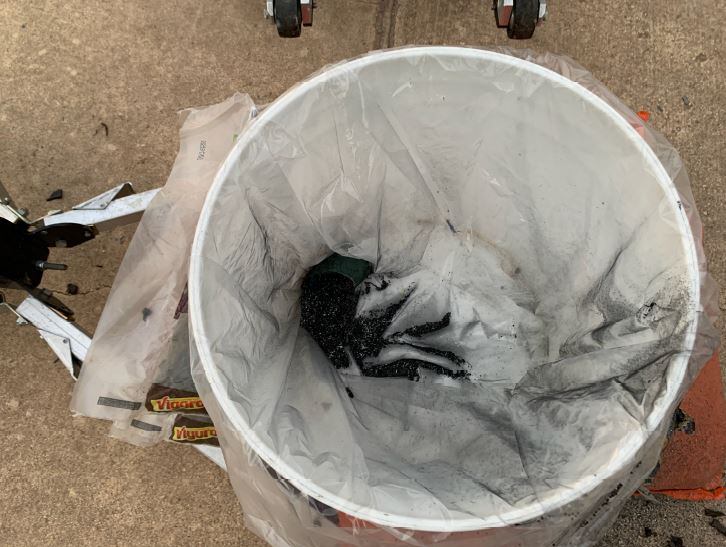
After the Honigberg case, the Austin police bomb squad decided it will handle evidence collection the way they think is correct, regardless of the lead agency, according to court testimony.
“We look at every single incident, and we say, ‘Hey, are there opportunities for us to do better the next time?’ And that’s what we got out of this case,” Scott Perry, assistant chief for Austin police special operations, told Army Times.
It is “uncommon” to not recover any of the physical components of a device after a render safe procedure, testified Kevin Finnerty, the FBI’s hazardous device examiner. But Finnerty still had enough information to provide an expert opinion.
Would it work?
All five devices pulled from the Pelican case qualified as IEDs, a technical term meaning they had explosive material, a container and a fuse, Finnerty testified.
Finnerty’s lab in Quantico, Virginia, didn’t have the IED components, but it was sent the powder samples, the caltrops and the Pelican case itself.
The lab determined that four of the IEDs were bags wrapped in tape containing double-based smokeless powder — common in ammunition — and the thermite mixture.
The IEDs varied in size, from several inches to roughly a foot long, according to the FBI lab. But because they were destroyed, disputes over the accuracy of those estimates continued in court.
A fifth device contained magnesium and match head shavings in a pill bottle. That also counted as an IED because there was energetic material, a container and a fuse, Finnerty testified. Unless the creator has a license, any homemade firecracker could qualify as an IED, he explained.
But the IEDs had no “weaponization in their design,” such as shrapnel or fragmentation, and did not qualify as destructive devices, the FBI lab report stated.
There were also no indications that the IEDs, the Pelican case and the caltrops were going to be combined to make a destructive device.
“Can they be added? Yes. But there was nothing in my examinations that could tell me that was going to be done,” Finnerty testified. “And the reason we say that is because, usually, if we get in a pipe [bomb], it will have a priming hole drilled in it. So you know that they’re prepping that pipe or case. There was none of that with the Pelican case.”
The defense’s expert witness, a retired Bureau of Alcohol, Tobacco, Firearms and Explosives agent named Jerry Taylor, disputed that the individual devices could even blow open the Pelican case.
“I recommended we do a test, because it was so far out of reality,” Taylor told Army Times.
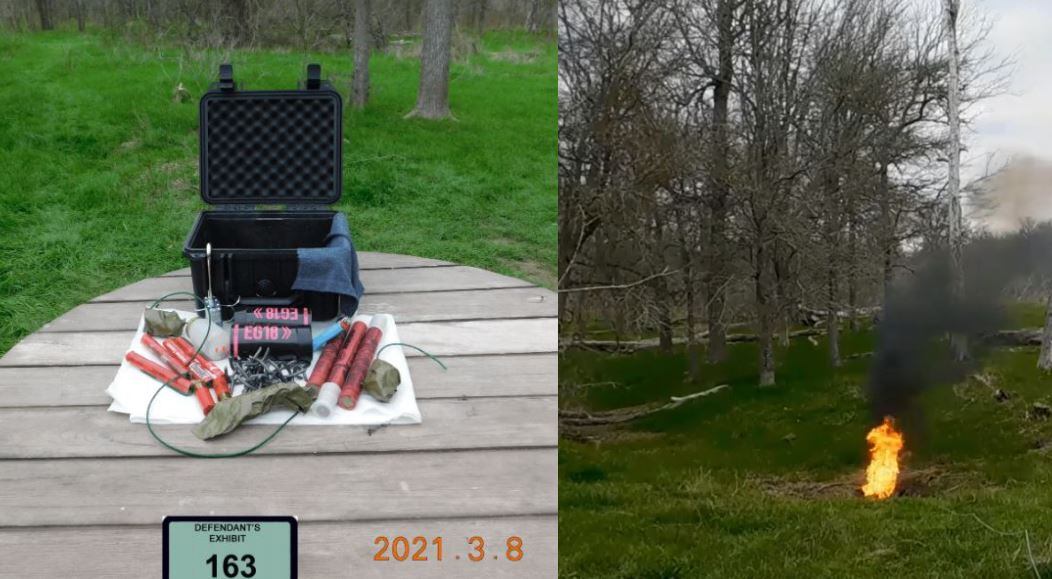
A copy of the video provided to Army Times showed Taylor lighting a fuse leading into a Pelican case containing replicas of Honigberg’s devices. The box burned in place.
One of the most experienced people who dealt with the Pelican case was Ewing, the senior Austin police bomb tech. At trial, he was asked about comments he made concerning Honigberg’s case when he was served a subpoena.
“I said, ‘I don’t think he should go to prison,’” Ewing testified. “But I do think he needs help.”
After a five-day jury trial, Honigberg was found not guilty of possessing a destructive device. But he was found guilty of possessing psychedelic mushrooms and sentenced Sept. 10 to three months of probation, after which his record will be expunged.
“I had read about a study that said psilocybin was able to assist in PTSD treatments,” Honigberg told Army Times. “Living on my own, you know, some of those old demons were coming back.”
Honigberg turned down plea agreements offered by Assistant U.S. Attorney Grant Sparks before the case went to trial.
Sparks’ office declined to comment for this article. But the deals, Honigberg said, required him to admit that the Pelican case was a bomb, which he adamantly denied.
“That’s why I felt it was so important to have it go to trial,” Honigberg said. “The highest level of exoneration is by a jury in this country.”
Kyle Rempfer was an editor and reporter who has covered combat operations, criminal cases, foreign military assistance and training accidents. Before entering journalism, Kyle served in U.S. Air Force Special Tactics and deployed in 2014 to Paktika Province, Afghanistan, and Baghdad, Iraq.




